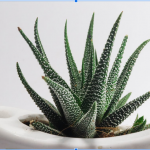India is among the fortunate countries that just bear either winter or summer throughout the year. India enjoys four seasons in 365 days. It is because India lies near the equator and occupied heavy forests. India seeks economical benefits by exporting agricultural products produced during seasons.
Four seasons of India
- Winter Season
- Summer Season
- Monsoon Season
- Autumn Season
Below are the details of each season.
Winter season
What else could be imagined with the phrase winter season? It sounds like melting cold with hot. India experiences the chills in the winter season. The winter season commences from mid-November and lasts till the month of February. In Northern regions of India, December-January is the coldest time span. But the Southern regions of India including Kerala and Kamatska do not get much cold. The temperature range in these areas is not much low as it is in Nothern areas. 24°C to 25°C temperature range is recorded for Chennai. While on the other hand, the temperature range in Jammu Kashmir is -4.3°C to 26°C.
Winters are cold but they bring dryness as well. Sometimes people hate winters due to drying itchy skin. Normally low humidity, clear skies, low temperatures, and feeble variable winds are experienced in West and NorthWest from Ganga valley.
Winter season brings the opportunity to cultivate winter crops or rabi crops. Rabi crops wheat, gram, peas, and mustard. They are grown in November and are harvested in April. Banana, grapes, cactus pear, strawberries are the winter fruits. They contain all essential nutrients to save from environmental harsh effects in the winter season. Indian bananas goods exported as well.
The vegetables of winter includes the following:
- capsicum
- carrot
- onion
- spinach
- Green peas
- cauliflower (the most favorite throughout winter)
India exports theses vegetables, fruits and other crops all over the world in this season and wheat also make a share of exports these exports.
Summer
Summer gift us excess sweat that we don’t need to use water for bath purposes. Sounds silly. India experiences hottest days in the summer season. It commenced from the start of March and lasts till the end of June. We pole tilt toward the sun, the Summer season prevails in the air of India. 42°C temperature is recorded for Gujrat and Madhya Pradesh regions. In NorthWestern (Punjab, Rajasthan, Haryana, Uttar Pardesh) areas of the country, the temperature is recorded 45°C in the month of May.
Air Pressure falls when the temperature rises due to higher levels of humidity. The temperature for Jammu is recorded as 50°C. Strong, gusty, dry and hot loo blows across the north and north-western areas during the day in the summer season. If anyone encounters the direct exposure to the loo, it can be fatal. A dust storm is commonly observed in northern India (areas include Delhi, Punjab, Harayana).
There are some special fruits and vegetables for the summer season. They are cultivated on the fertile plains of India and then people harvest them when the time comes. Watermelon, mango, muskmelon, black plum mulberry, grapes, pineapple, and strawberries are some of the summer fruits. Indians’ manages are on demands. They are found rich in flavor.
The vegetables grown in the summer season are tomato, chili, brinjal, pumpkin, cucumber and Bottle gourd. Crops of summer season includes maze and Paddy as major crops.
Monsoon
Monsoon is the ever-favorite season, but it can bring disasters as well in the shape of floods. The monsoon season begins in early July and ends in mid-September. Monsoon season all depends on the altering flow of winds prevailing in a region. Flood and dry wash are two Basic calamities concerned with the monsoon season. Throughout land and oceans, temperature differences a way for the monsoon to come and exhale heavy rains. The temperature drop is measured at some places where altitudes are higher. Normally temperature values in monsoon are 30°C to 35°C.
Every season has its special environmental characteristics. Based on which, some fruits are yielded. These fruits include Java plum, cherry, lychee, peach, Apple, bananas, and pomegranates.
Vegetables of the monsoon season are Garlic, Bitter gourd, Teasel gourd, fenugreek, sweet potatoes. Rice crops are grown in areas where heavy rainfall happens. It is because the rice crop needs excess water.
Autumn
The Autumn season is devoid of greenery but still, sometimes it adds sparkles to nature. Those dried brown leaves laying on the floor and when we step on them, the crackling sound heals our depression. Photographers have captured the entire beauties of autumn.
The season begins from early September and lasts till the month of November. In the early days of the season, the weather stays bright, warm and sunny. As time passes, the weather is changed to rainy, wet and cloudy. The days are shorter and nights get longer in autumn. 20° to 30°C temperature is measured in India during the autumn season. Falling leaves are the prime sign of the start of autumn. Normally autumn season is recognized as fall season across India and people also relate the season with sacrifices.
Pumpkins, Cranberries, and pears are some of the autumn fruits. The vegetables of the autumn season beans, fennel, carrots, spinach, tomatoes, parsnip, cucumber, turnip, onions, and sweet corn. These all are seasonal vegetables of India and are grown all across the fertile areas. The main crops grown in the autumn season are rice, maize, groundnut, and sugarcane.
Conclusion
The nature has gifted Indians four seasons. Every season has its specific characteristics. Some people love all seasons while some like only winter or season. These different seasons permit to grow a variety of crops and here it adds a bonus to the economy. They can be transported across the world. When seasons change, people encounter some seasonal diseases. Flu and nausea is a common illness. There are also some diseases associated with temperature variations. In summer people can have heat strokes while in top people have an influenza attack or enema. People should consume seasonal fruits and vegetables because that is the only way to avoid health issues caused due to environmental effects.







